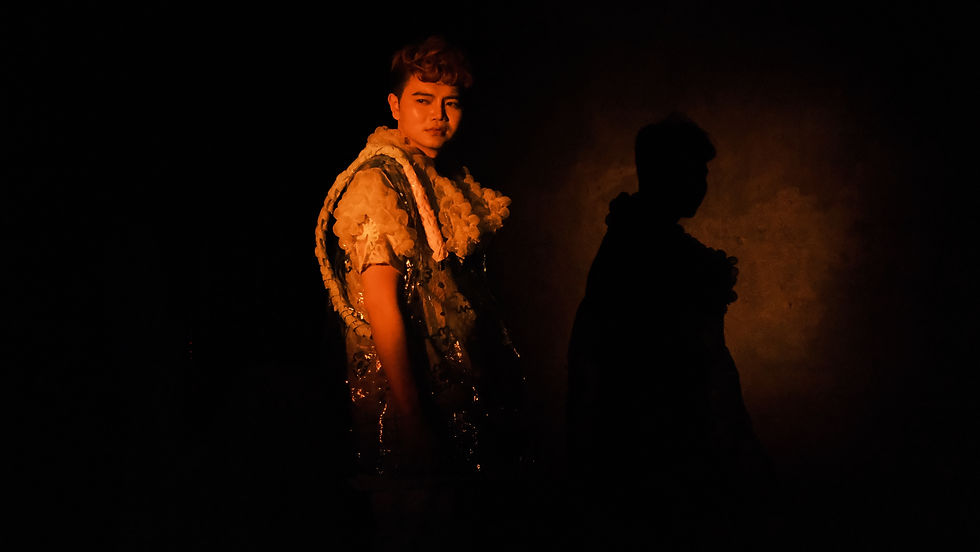A Journey to the West
Drama
Rosemary Branch Theatre & The Playground Theatre
London, UK
July 2025
Directed by: Yi Tang
Lighting Design & Technician: Sheron Luo
A Journey to the West is a genre-blending psychodrama inspired by the classic Chinese epic. It follows Xiaohua, a sheltered international student whose surreal experiences in London mirror the mythic trials of the Monkey King. Combining Sichuan Opera face-changing, puppetry, digital projection, electronic music, and live audience interaction, the piece fused myth with Gen Z identity, exploring parental control, migration, and the search for independence.






Design Concept & Execution
I shaped the production through ten key lighting states, each reflecting a stage in Xiaohua’s journey — from the uncanny glow of a nursery to the harsh glare of an airport, the fractured half-light of tube station, and the haunting shadows of multiple selves.
Because the show toured across different venues, adaptability was essential. With limited rigs, I built a flexible system where light carried most of the storytelling. Torches became central tools throughout the performance: used as improvised follow spots, to swallow Xiaohua in shadow, or to move like guiding presences that echoed his inner monologues and the pressure of his parents. Practical lights such as phones expanded this approach, while simple but precise states implied complex spaces like the Tube, the airport, or Xiaohua’s flat.












Problem-Solving & Efficiency
Touring meant adjusting quickly to different rigs while keeping a consistent visual language. Pre-structured cue states made adaptation efficient, while re-engineered practicals ensured brightness and reliability. Working closely with performers, I often devised cues in rehearsal — letting beams interact with bodies, making light feel like an active partner in the storytelling.
Outcome & Reflection
The lighting became both structure and character — defining space, shaping mood, and reflecting Xiaohua’s struggle between control and freedom. Reviewers described the design as “clever,” “smoothly and imaginatively told,” and “almost like a character itself — minimal, often just a single moving spotlight, but active and responsive to the action.”








